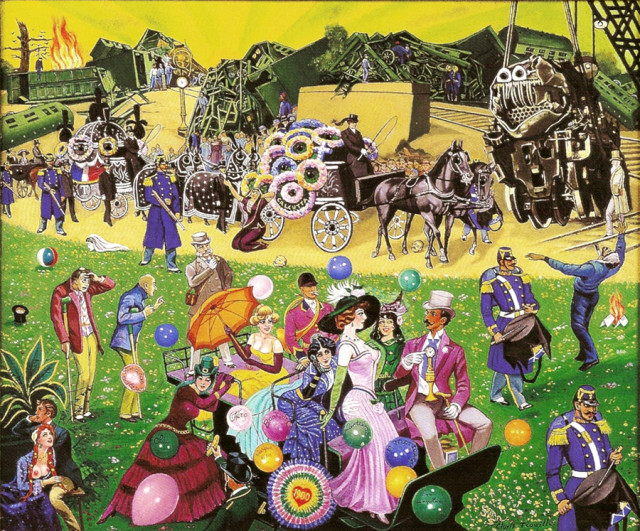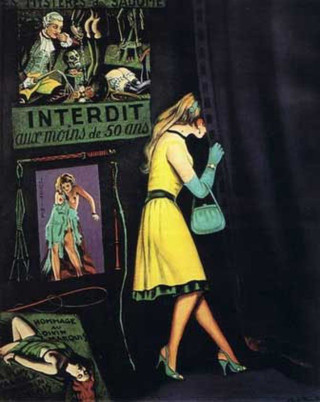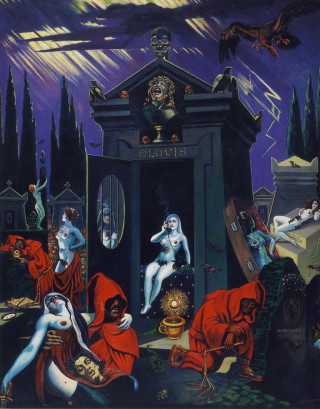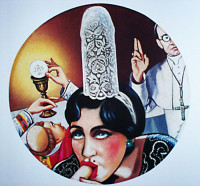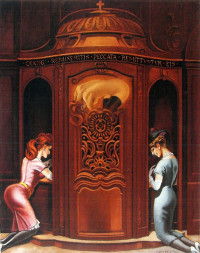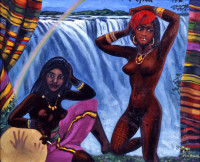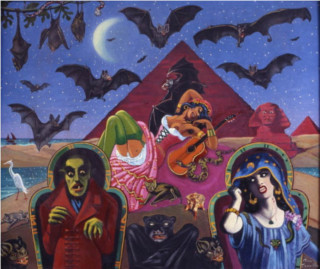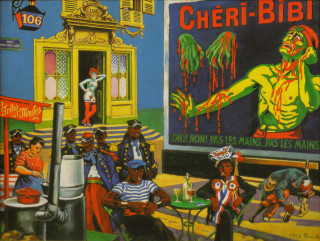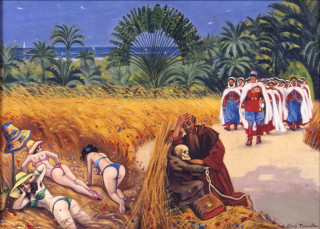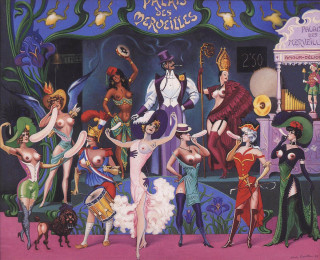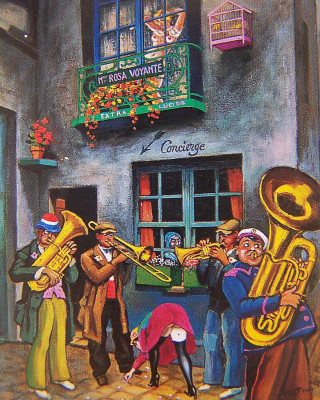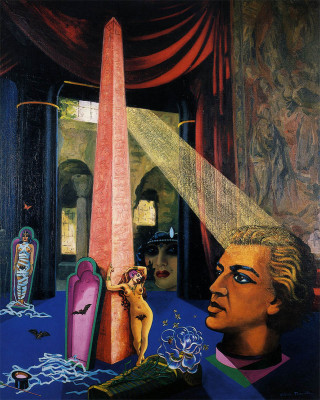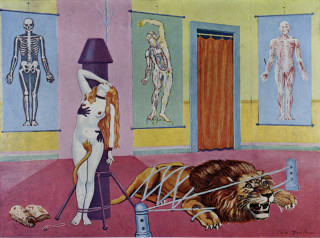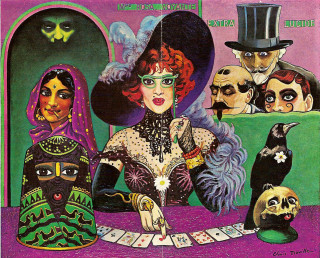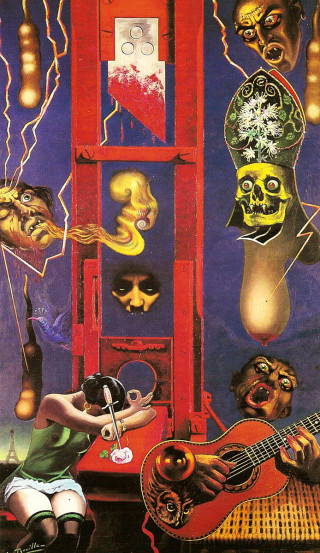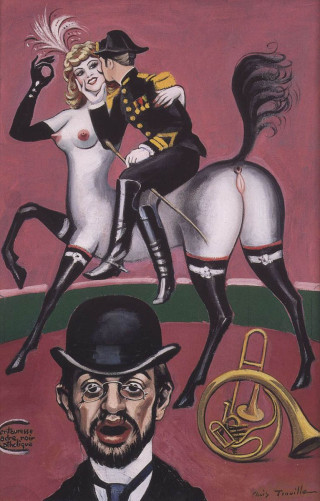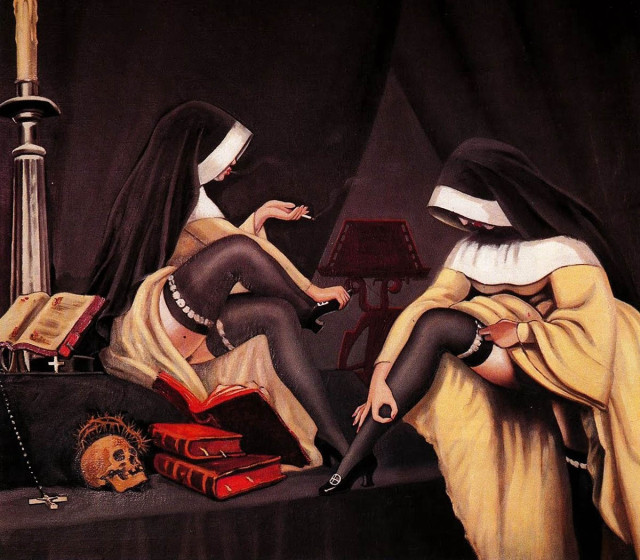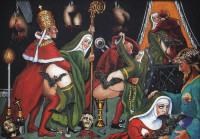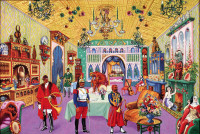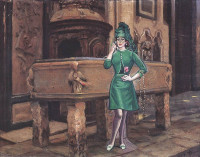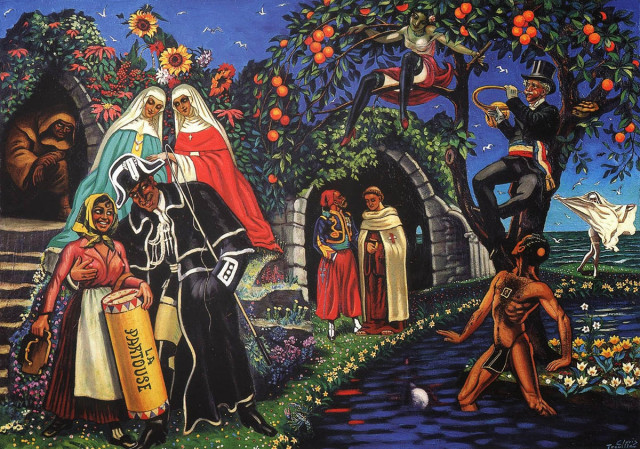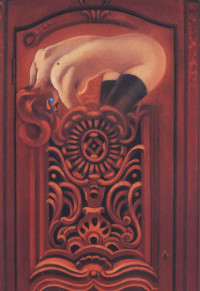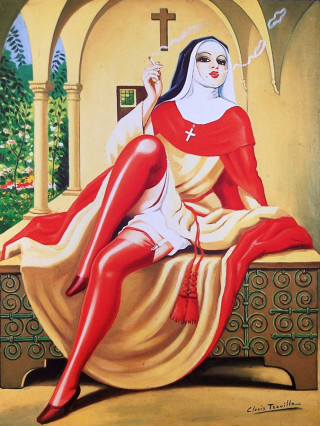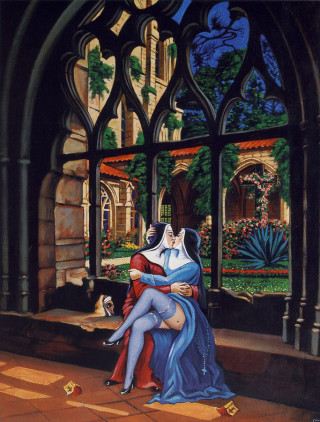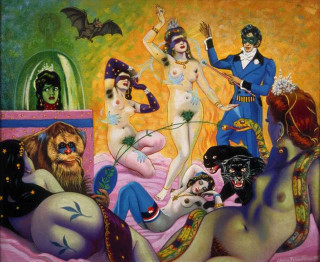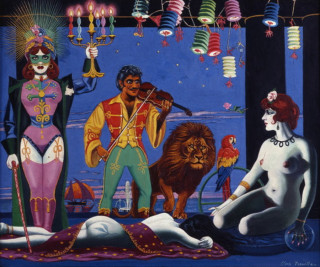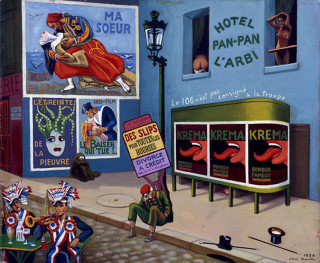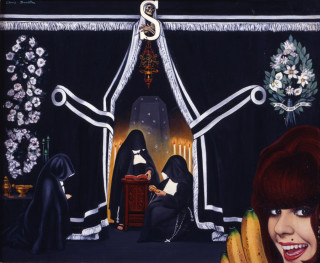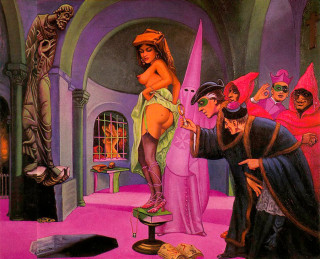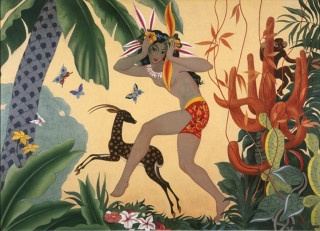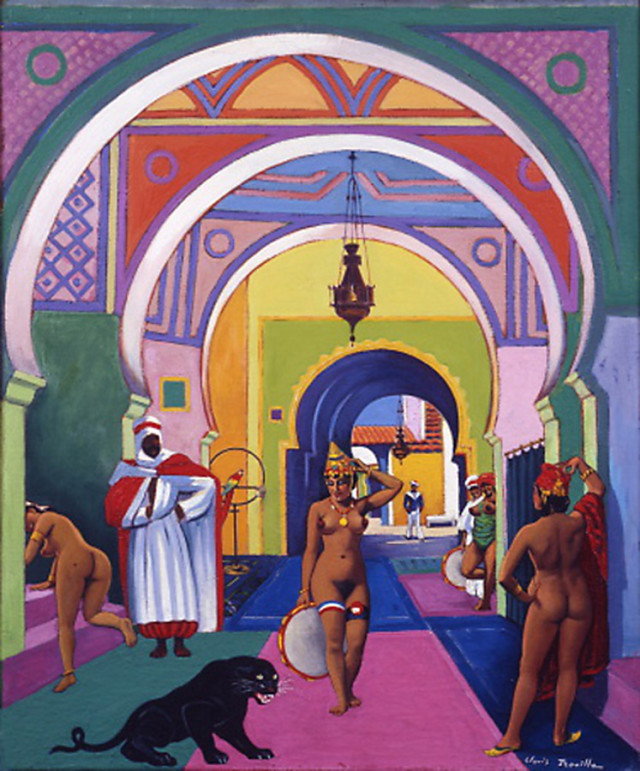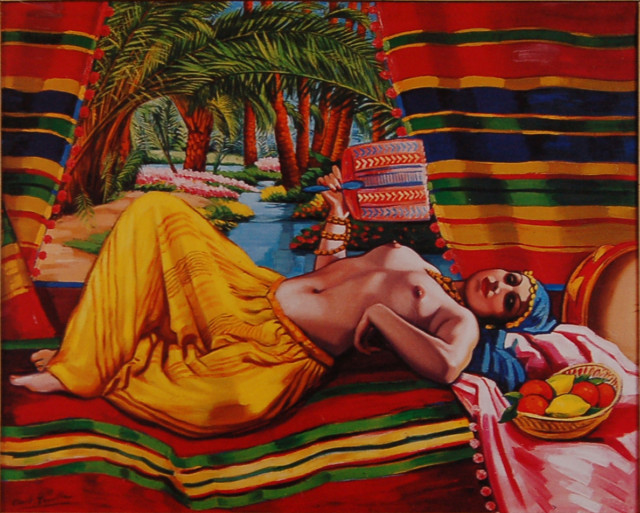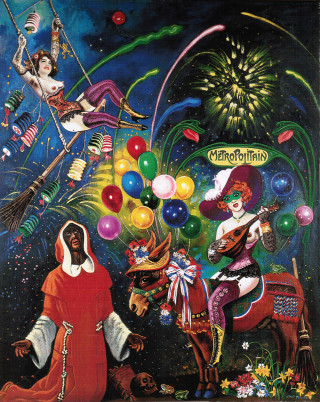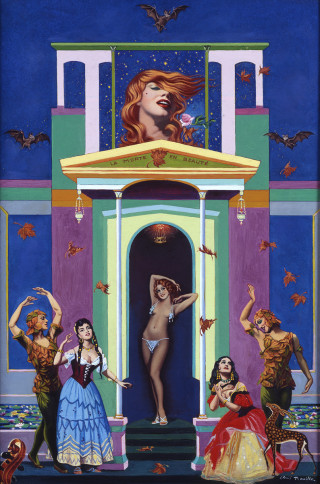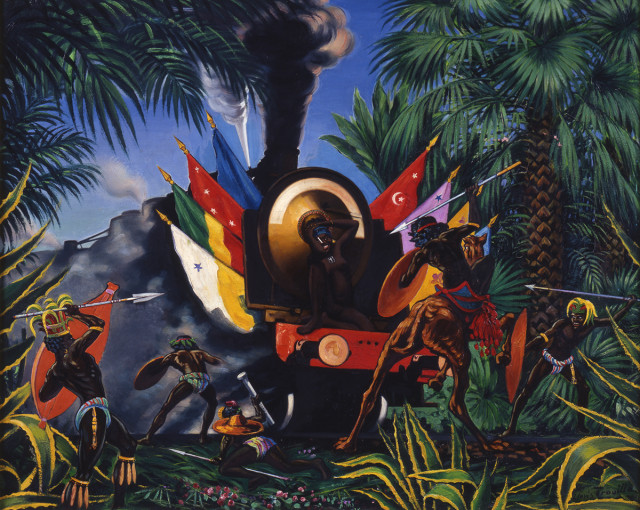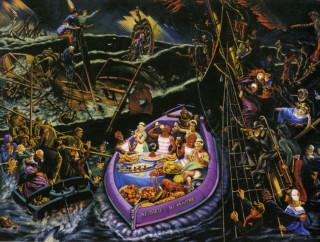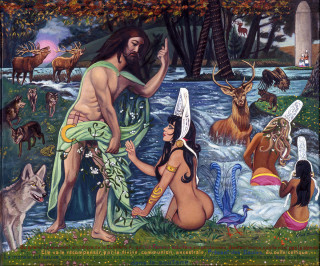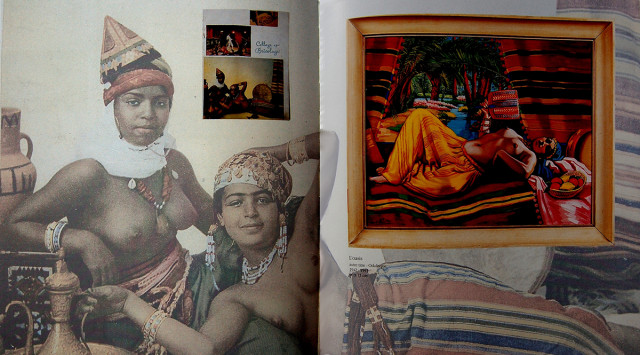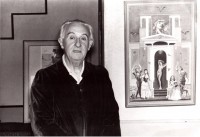 Camille Clovis Trouille was born in 1889 in La Fère, the Picardie region of France. From 1905 to 1910 he studied at the École des Beaux-Arts of Amiens, and in 1907 his painting “The Blonde girl” took first prize of Fine Arts of Amiens. Along with painting Trouille studied fashion and advertising, and worked as a designer for chez Draeger.
Camille Clovis Trouille was born in 1889 in La Fère, the Picardie region of France. From 1905 to 1910 he studied at the École des Beaux-Arts of Amiens, and in 1907 his painting “The Blonde girl” took first prize of Fine Arts of Amiens. Along with painting Trouille studied fashion and advertising, and worked as a designer for chez Draeger.
On August 2, 1914 Trouille was drafted and thrust into one of the most hotly contested areas in all Europe. The experiences of his service in World War I gave him a lifelong hatred of the military and made him an anarchist. His painting followed suit.
The simple style and lurid coloring of Trouille’s paintings echo the lithographic posters used in advertising at the time, giving his work an unmistakable period look; yet his use of dreamlike narratives and iconoclastic, provocative imagery foreshadowed the “Lowbrow” movement of American art in the late 20th century.
In 1930 one of his first paintings, Remembrance, was discovered by Dali and Aragon at the Salon des peintres et écrivains révolutionnaires. André Breton declared Trouille a Surrealist and offered to exhibit his works in his gallery, but Trouille refused for fear of being permanently under a label. As a graduate of the Ecole des Beaux-Arts Trouille had the background and training to become quite famous, and his Surrealist friends doubtless encouraged him, but for Trouille fame meant that he would have to sacrifice the provocative and often offensive nature of his work and it would have been an unbearable limitation. He hated selling his paintings, and on at least one occasion he reportedly tried to buy the painting back so he could continue working on it.
From 1933 to 1935, and then from 1941 to 1952, Trouille regularly exhibited his work at fairs and small Independent shows: but in fact he worked at a department store in Paris restoring and decorating mannequins. Trouille always wanted to stay independent, and he never wanted to depend on galleries where his work would be publicly judged. In 1947 he broke from tradition and took part in the International Exhibition of Surrealism organized by André Breton and Marcel Duchamp at the Maeght Gallery in Paris; it was twelve years later before he joined another major show, the Exposition Eros internationale Surréaliste at the Galerie Daniel Cordier in Paris.
Almost all of his life, he only painted in his spare time and his entire portfolio consists of only a hundred paintings which he reworked, sometimes for years. His first solo exhibition didn’t occur until 1962 when he finally agreed to present twelve paintings at the Galerie La Lanterne magique, to coincide with the publication of the book The Vampire by Ornella Volta. The following year Trouille had his first formal show at the Galerie Raymond Cordier in Paris: the audience was restricted to viewers between 18 and 70.
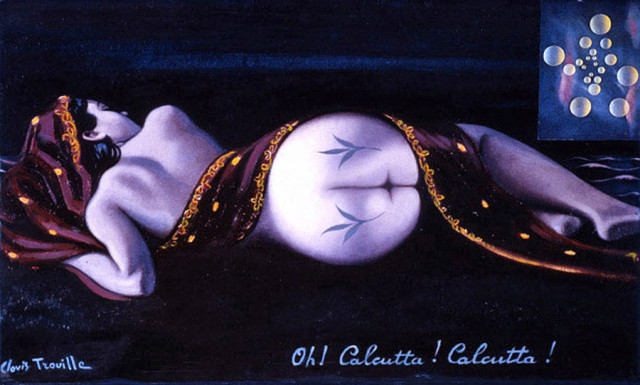
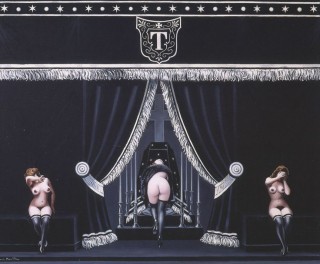 Towards the end of his life, Clovis Trouille experienced a certain success with his painting Oh! Calcutta! Calcutta! – a pun on the French phrase “Oh, quel cul t’as!” (“Oh, what a cute ass you have!”) – which gave its title to the famous comedy musical that had sex as the main topic. Created by Kenneth Tynan, the musical originally starred Samuel Beckett as one of its librettists and John Lennon among its musicians.
Towards the end of his life, Clovis Trouille experienced a certain success with his painting Oh! Calcutta! Calcutta! – a pun on the French phrase “Oh, quel cul t’as!” (“Oh, what a cute ass you have!”) – which gave its title to the famous comedy musical that had sex as the main topic. Created by Kenneth Tynan, the musical originally starred Samuel Beckett as one of its librettists and John Lennon among its musicians.
As Trouille explained: “… the ass forms a perfect circle designed to suggest the conquest of the moon.”
The stage version of ‘Oh! Calcutta!’ opened at the Eden Theater on June 17, 1969, and ran for 1,314 performances. A revival opened at the Eden Theater on September 24, 1976, and ran for 5,959 performances. As of February 2013, it was the seventh longest-running show on Broadway.
In 1975 Trouille’s work was included in the exhibition 50 Years of a Certain Surrealism in Tokyo.
Camille Clovis Trouille died in Paris on September 24 of the same year.


